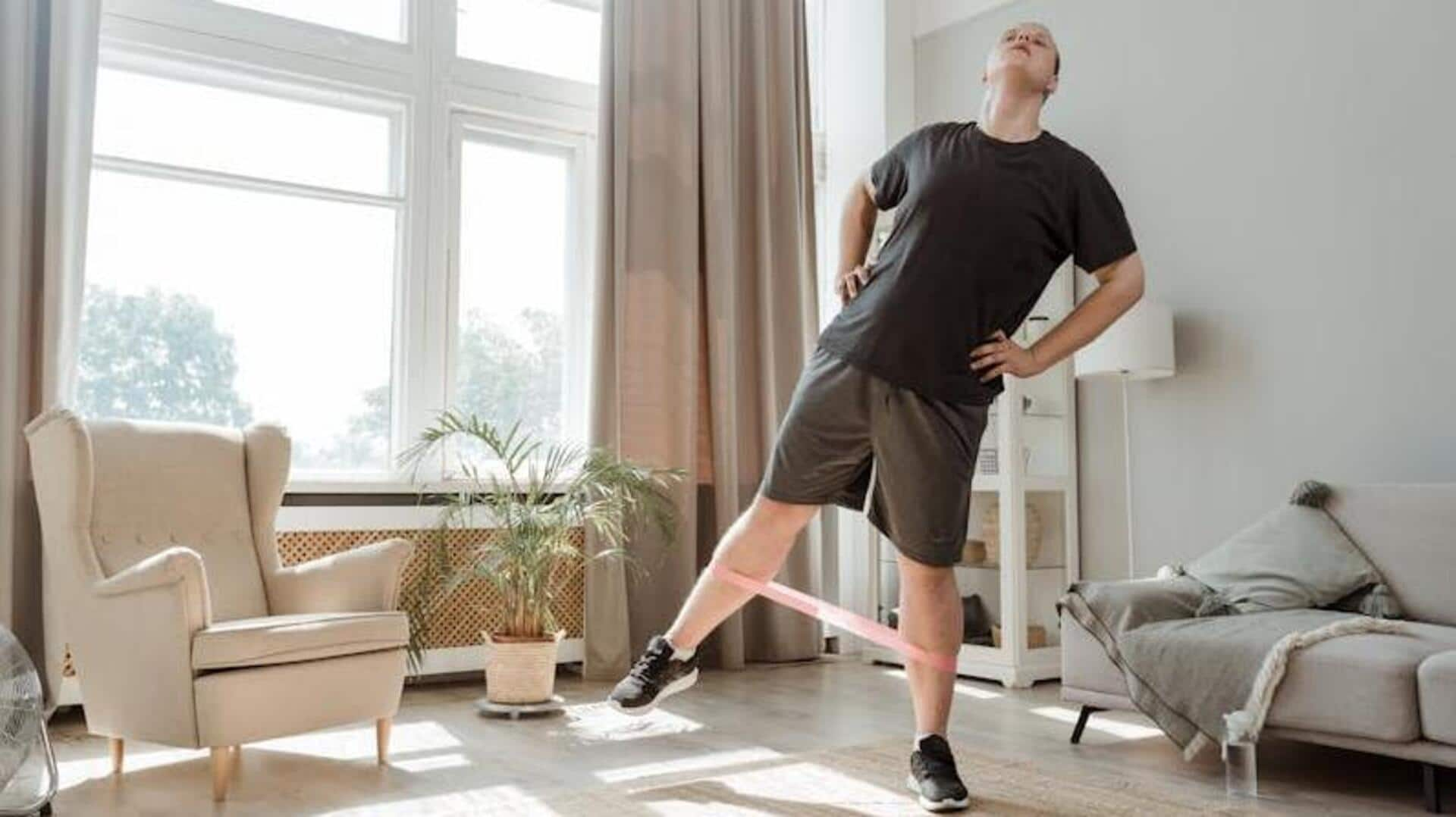
How to easily practice one-legged exercises
What's the story
The one-legged stand is a simple yet effective exercise to improve balance and stability. It can be done almost anywhere, requires no equipment, and is suitable for people of all fitness levels. Regularly practicing the one-legged stand can improve your coordination, strengthen your core muscles, and reduce the risk of falls. Here's how to effectively incorporate this exercise into your routine.
Posture
Start with proper posture
Start by standing upright with your feet hip-width apart. Shift your weight onto one leg and keep the other leg slightly bent at the knee. Make sure your spine is straight and shoulders are relaxed. Maintaining proper posture is important for maximizing the benefits of this exercise and preventing injury.
Core
Focus on core engagement
Pulling your belly button towards your spine and engaging your core muscles is essential when you are balancing on one leg. This not only stabilizes your body, improving balance, but also strengthens your whole body and posture. A strong core is key to supporting the upper and lower body, so this technique is imperative for an all-inclusive fitness routine.
Visual aid
Use visual focus points
To improve your balance on the one-legged stand, choose a stationary object at eye level to focus on. This trick keeps your focus, minimizing swaying or losing balance. With regular practice mindful of such focal points, you'll see a drastic improvement in your stability and balance in due time. Making this the key to mastering the exercise.
Duration increase
Gradually increase duration
Start by holding the one-legged stance for 10 to 15 seconds on both legs. Then, as your balance starts improving, gradually increase the duration. Ideally, you should aim to hold the pose for at least 30 seconds on each side. This progressive increase not just improves your endurance but also strengthens the muscles responsible for stabilization by a huge margin.
Variations
Incorporate variations for challenge
Once you are comfortable with basic balancing, try closing your eyes or moving your arms in different directions while standing on one leg. These variations add complexity,ikis, challenging your coordination and enhancing your stability. This progression doesn't require extra gear or space, making it an effective way to advance your balance and contribute positively to your overall health and wellness goals.